Bari - Puglia’s capital
Bari Vecchia has transformed into a vibrant hub with cafés, restaurants and bars while the everyday life of its longtime residents continues as it has been and still is. Front doors open into the cool shadow of the narrow alleyways, the sound of food being prepared and of families dining together can be heard in the background while laundry hangs from balconies to dry in the lazy afternoon heat.
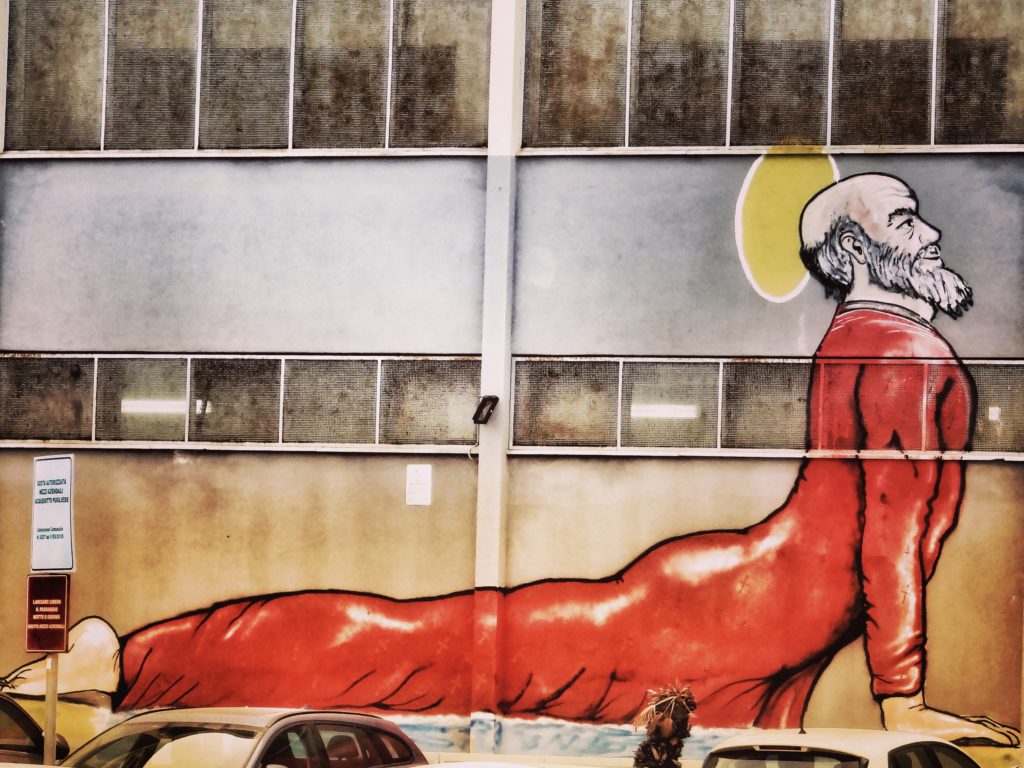
San Nicola
The relics of Saint Nicholas - the patron saint of Bari - are housed in Bari’s Basilica di San Nicola.
The whole city celebrates the anniversary of their arrival over an annual three-day festival taking place around 9 May.
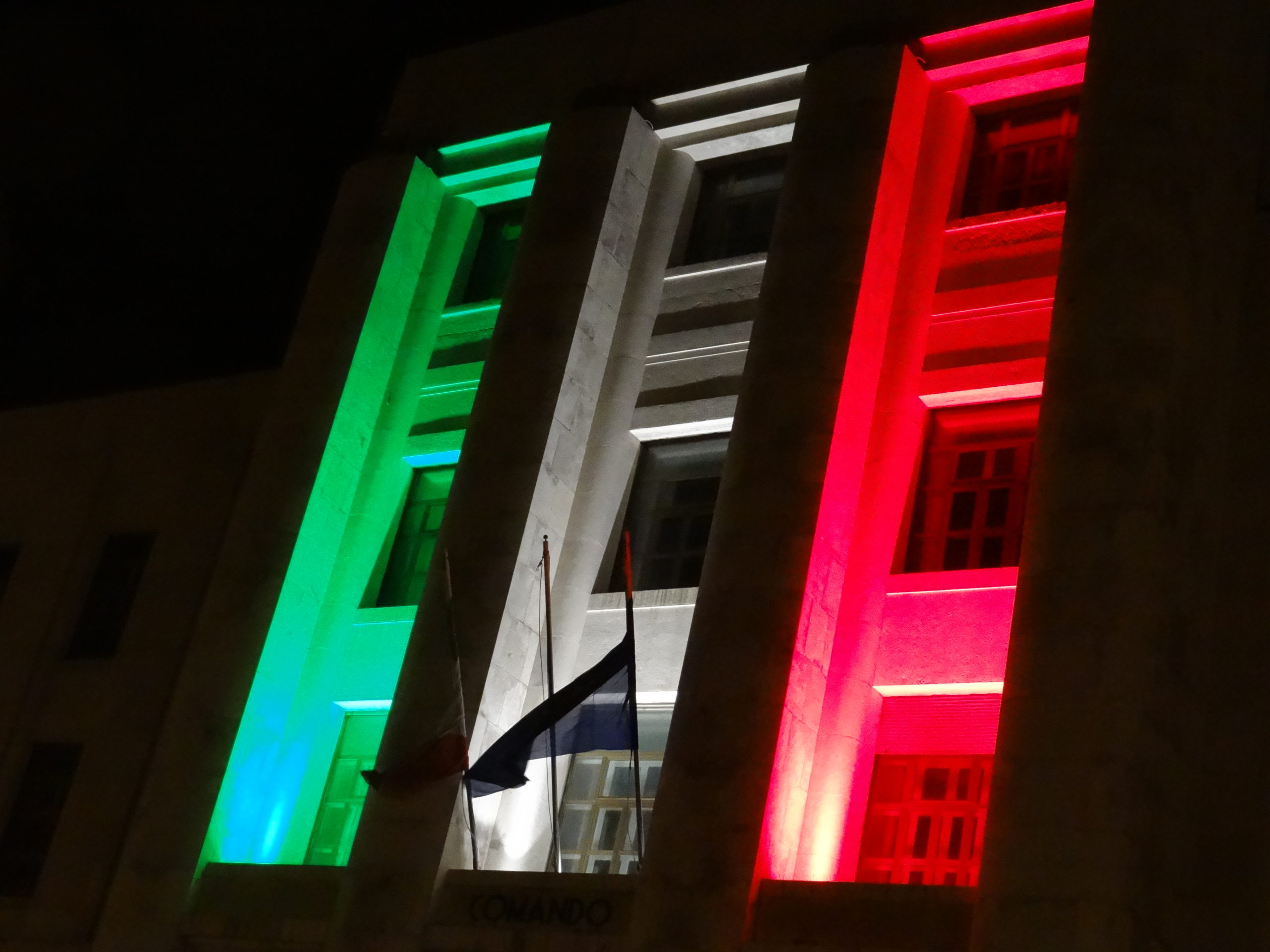
History | the Middle Ages
An emirate based in Bari was established in 841 after Muslim armies seized several cities in Puglia. They were eventually driven out by Christian forces after which Bari became Italy’s imperial headquarters for the next two centuries. In 1071 Norman forces captured the city following a 3-year siege and established a kingdom in southern Italy, ending the Byzantine presence in southern Italy after 536 years.
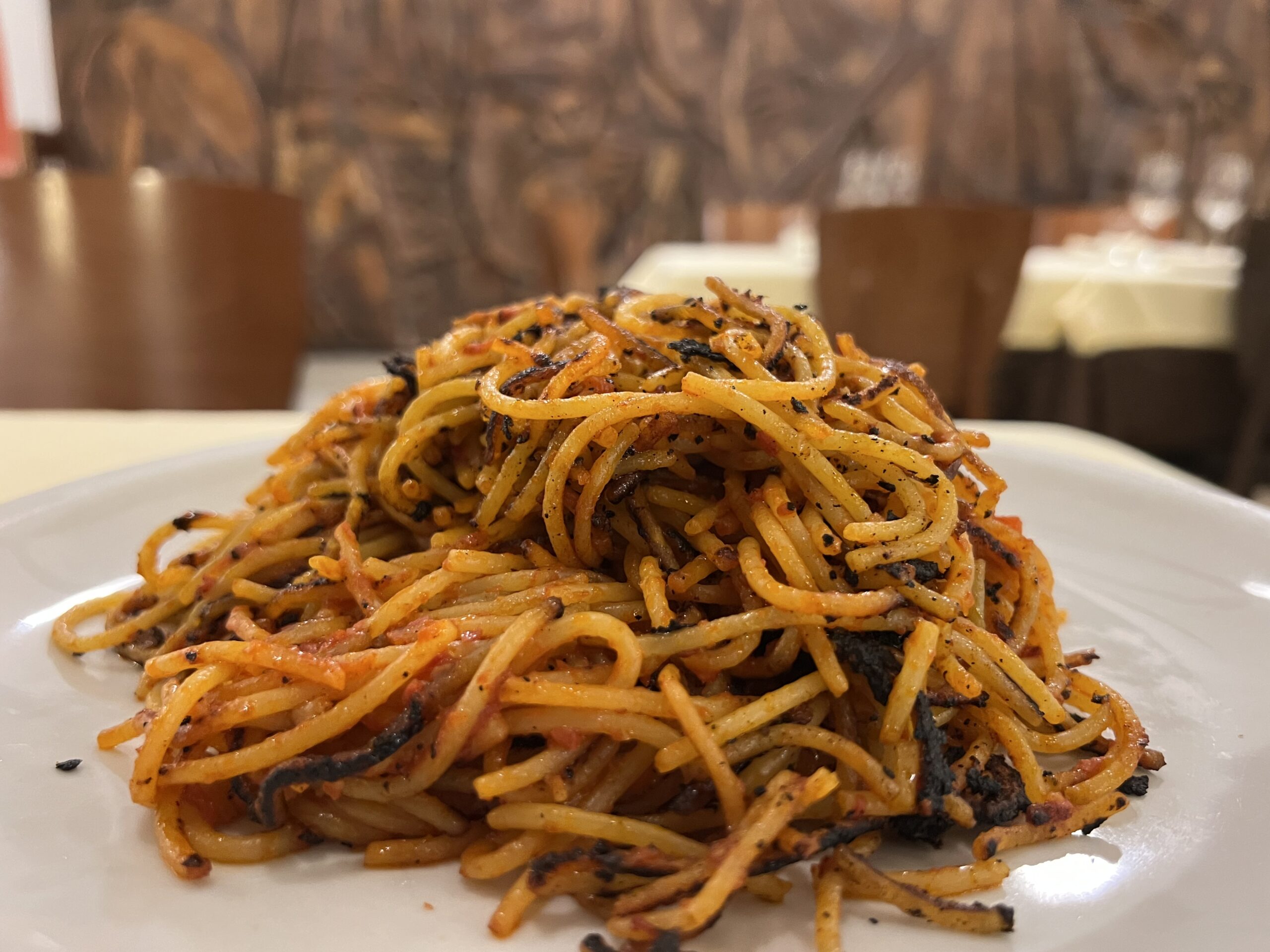
Food and drink
Good food is easy to find and is always just around the corner. Follow your nose ... and the locals. Street food culture is coming into its own, especially around Bari’s old port, where you can also eat freshly landed raw seafood served up by the fishermen who caught them.
The Big Guide to Bari
Once an important Roman settlement and second only to Naples in terms of its strategic importance as a port, the city is increasingly cosmopolitan. Ignore warnings that Bari Vecchia is a gritty “no-go” area. Extensive regeneration has transformed the area into a vibrant hub for bars and restaurants centred around the piazzas Mercantile and Ferrarese and a fine destination for visitors.
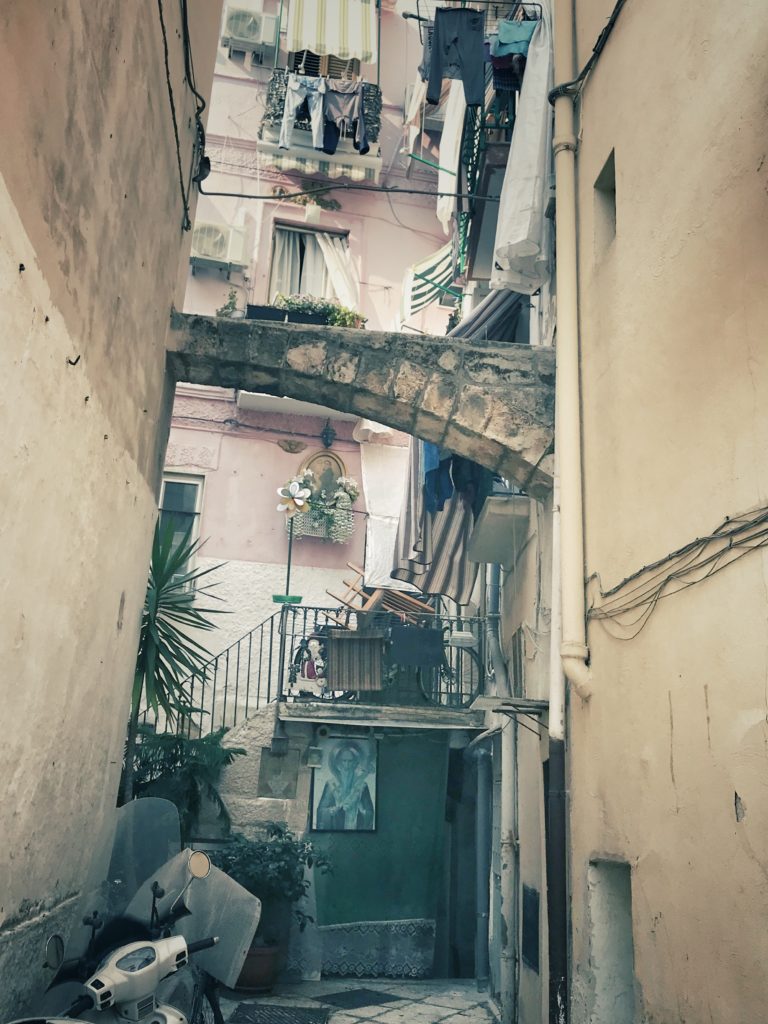
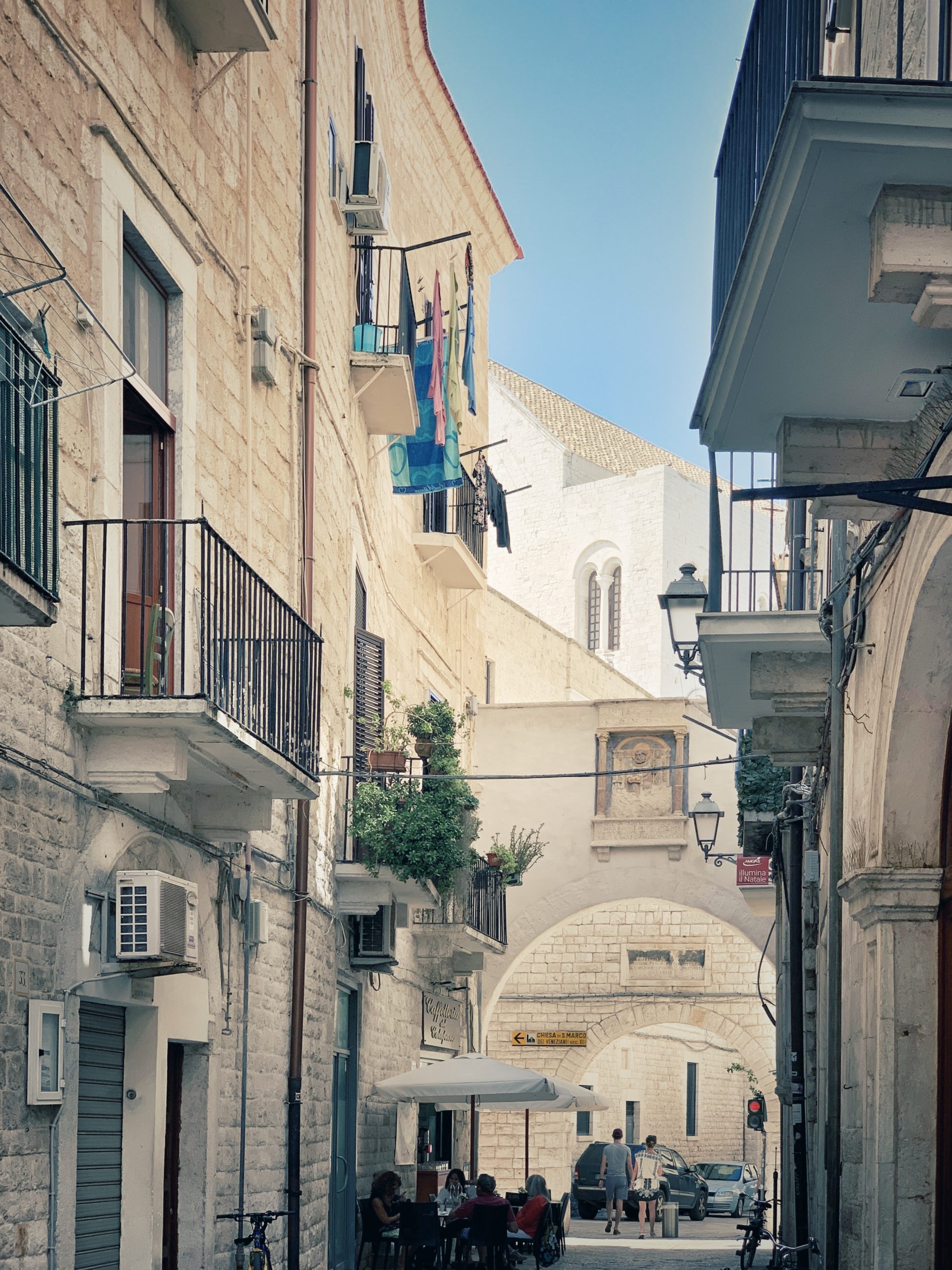
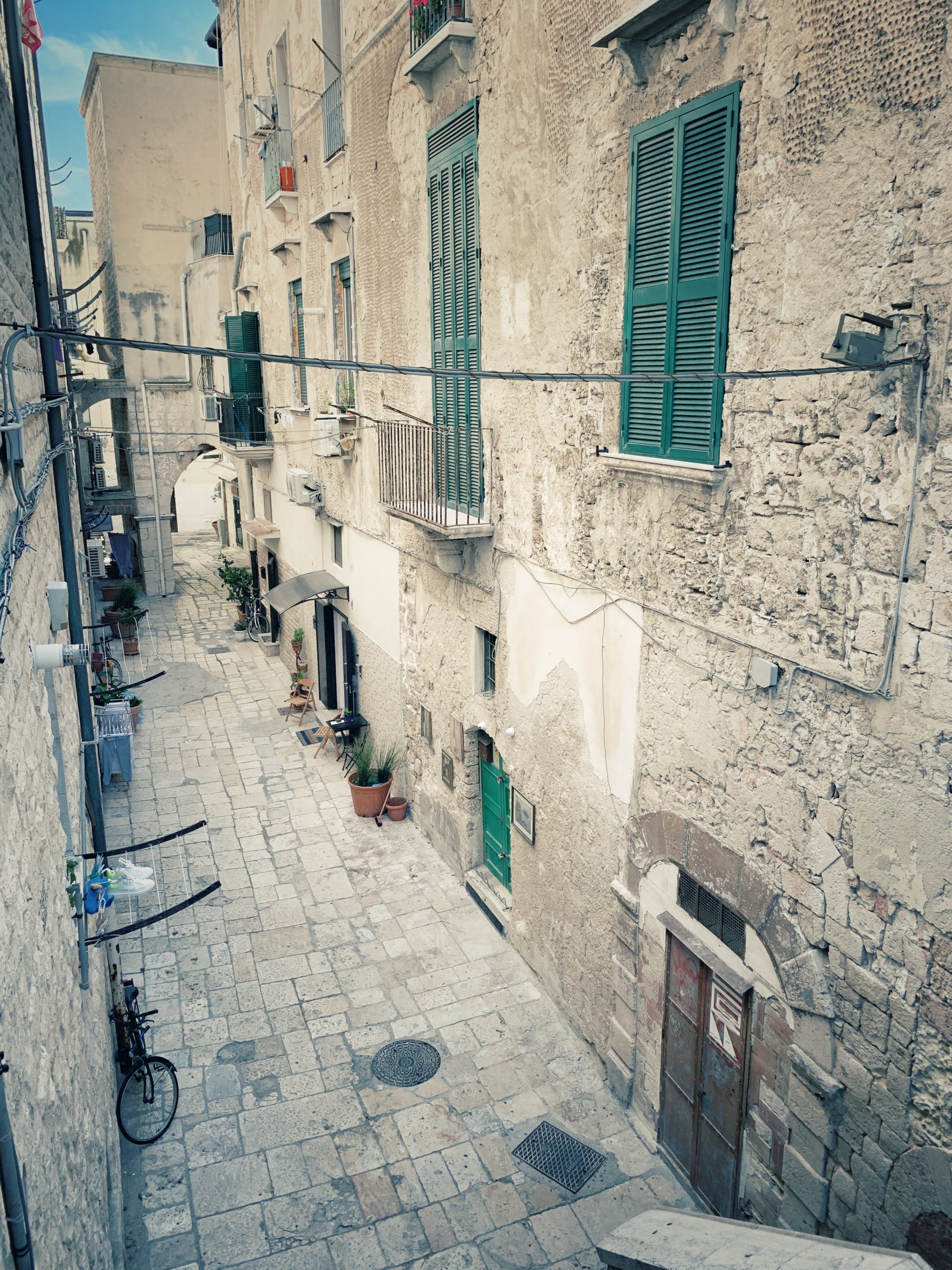
The Basics
Bari is the main point of entry for many arriving in Puglia - by air, ferry or train.
While it may not be most visitors’ ultimate destination, Bari is becoming a popular base for those on a shorter city-break or using public transport to get around the region.
Bari Vecchia - a knot of narrow streets and alleyways - is the highlight of a trip to our regional capital. Vibrant but not yet overly commercial. The Baresi podcast team members rave about the culture and nightlife on offer, telling us that their city is “buzzing”.
There may be sparking, expensively refurbished apartments with amazing terraces overlooking the Adriatic but in the old town you can still see the way that longtime residents of the old town have always lived.
Front doors open into the cool shadow of narrow alleyways. The sound of food being prepared and the chattering of families dining together echoes all around. Laundry hangs from balconies, drying in the lazy heat of the afternoon.
Everyday life as it has been, and still is, continues all around the old town.
The Basilica San Nicola houses the relics of the city’s patron saint. It was here in the 11th century that Peter the Hermit preached the First Crusade.
Visitors from far and wide, many Russian - a statue gifted by Russia in 2003 watches over the square within which the church sits - still flock to the crypt where his mass is celebrated by Catholics and Orthodox Christians alike, reinforcing Bari’s importance as a destination of religious pilgrimage.
The Castello Svevo stands on the edge of the old town, near the port and the basilica. A massive 13th century walled fortress it now houses a museum.
The Murat district south of the old town was built by Joachim-Napoléon Murat, King of Naples from 1808 - 1815 by virtue of being Napoleon's brother-in-law, in an attempt to improve conditions. Laid out on a practical grid system its an early example of modern town planning.
Street food is becoming ever more present, and the highlight of the Bari calendar is the festa di San Nicola held in May to commemorate the arrival of the relics of the city’s patron saint (his saint day on 6 December is also celebrated locally).
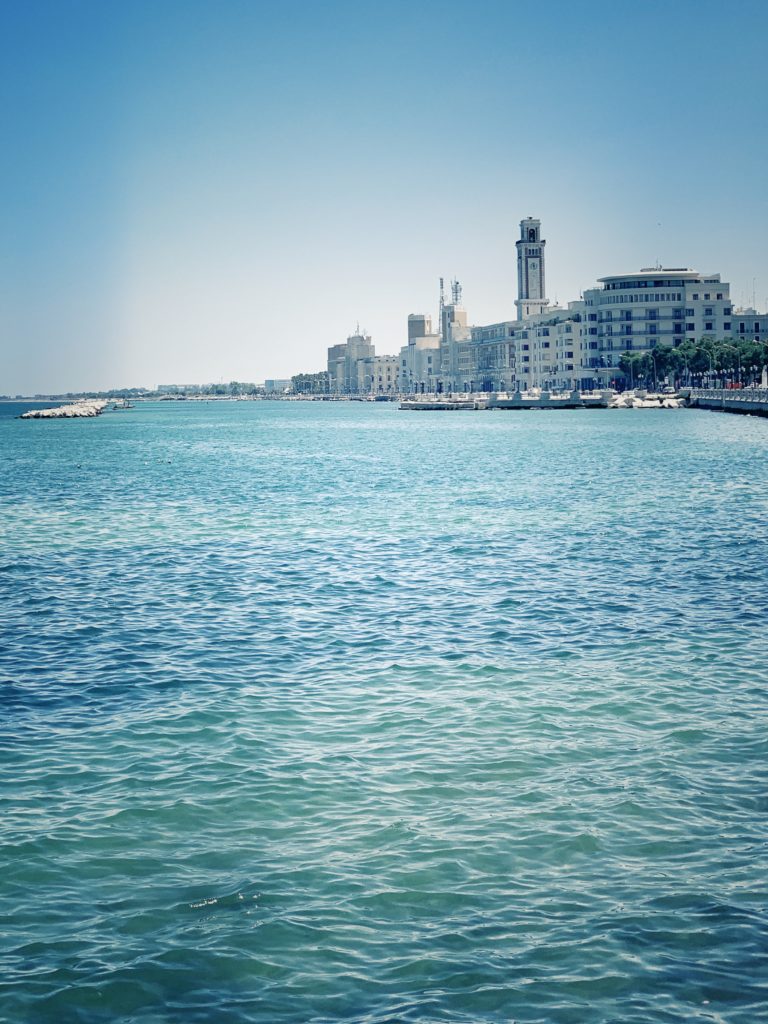
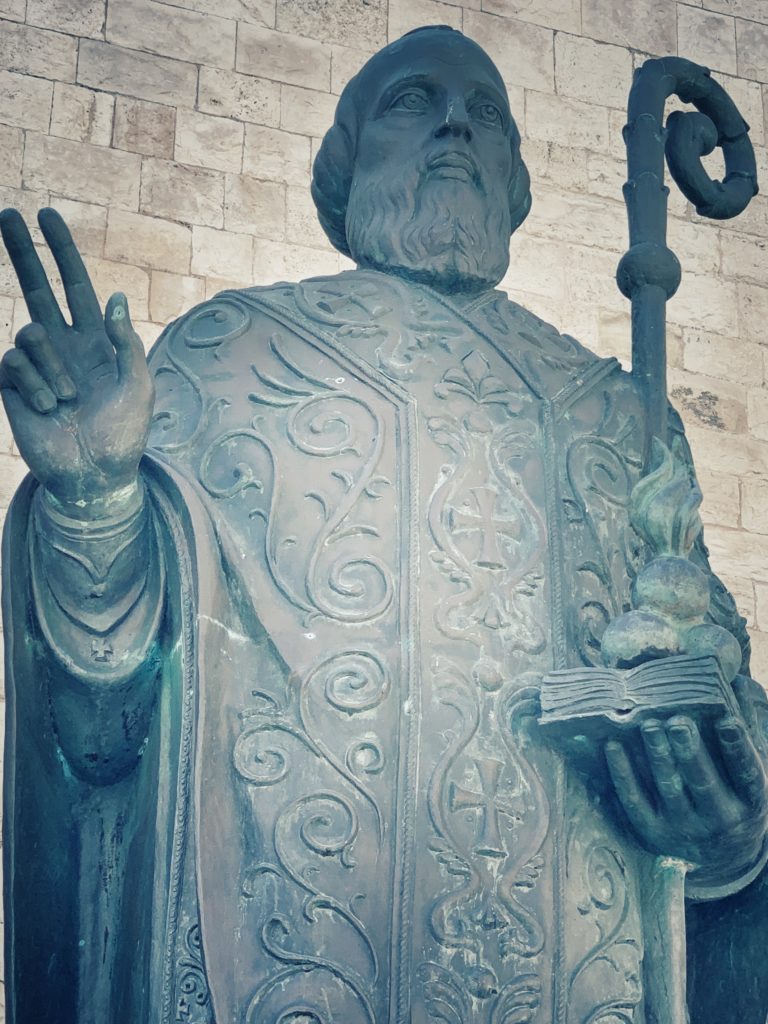
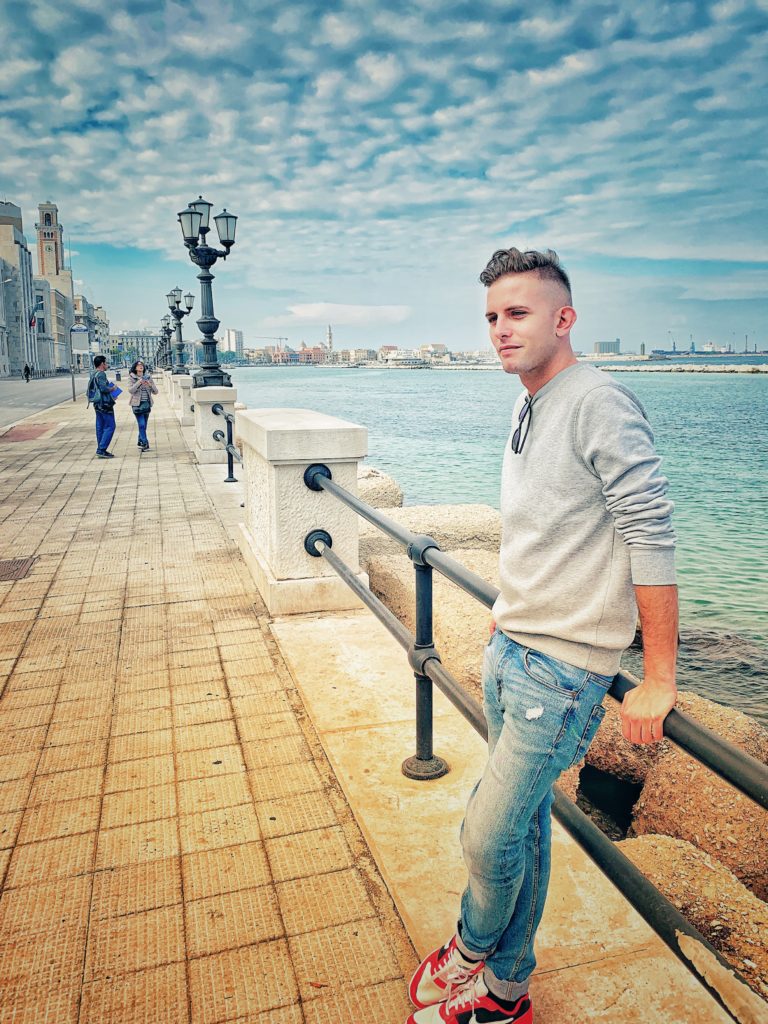
Bari - a brief history
To best understand Bari a history lesson is a good place to start.
Believed to have been inhabited since 1500 BC the Greek influence on Bari’s origins was strong. Under the Romans, Barium as it was then called, became an important port and effectively the economic centre of the region. To this day Bari remains an important commercial centre and trading port.
A Saracen stronghold in the 9th century AD, the city became the seat of the Byzantine governor of Puglia in 885. Following a 3-year siege of the city it was captured for the Normans by Robert Guiscard in 1071. Peter the Hermit preached the First Crusade there in 1096, and a large party of crusaders embarked from its port.
A defining event in Bari’s history occurred under Norman rule when sailors from Bari in competition with others from Venice set out to retrieve the remains of San Nicola from the Turks. The Barese succeeded in recovering his relics which were then brought to Bari on 9th May 1087. On each anniversary we celebrate the “Translation of the Relics of Saint Nicholas from Myra to Bari”.
To this day his relics rest at the Basilica of Saint Nicholas built by the people of Bari for that purpose and which remains Bari’s most important building.
Razed by William the Bad of Sicily in 1156, Bari acquired new greatness under Emperor Frederick II (1220–50). An independent duchy under a succession of rulers from the 14th century, it passed from the Sforza family to the kingdom of Naples in 1558 and became part of the Italian kingdom in 1860.
Notwithstanding the importance of the port to the economy of the region, the area was home to many court seats during the Hohenstaufen, Anjou and Aragon kingdoms. Nearby Barletta, Bitonto and Andria were all thriving towns. For example the Castel del Monte built by Frederick II, another of Puglia’s UNESCO World Heritage Sites, is located outside Andria.
As such Bari did not really gained a hegemonic role in the same way Palermo gained it in Sicily or Naples in Campania. At least not until the the Modern age. Consequently Bari lacks a bit in monumentality or something really outstanding (besides the Cathedral and the seafront) and is without the "wow factor" that can be found elsewhere in Puglia’s towns and cities.
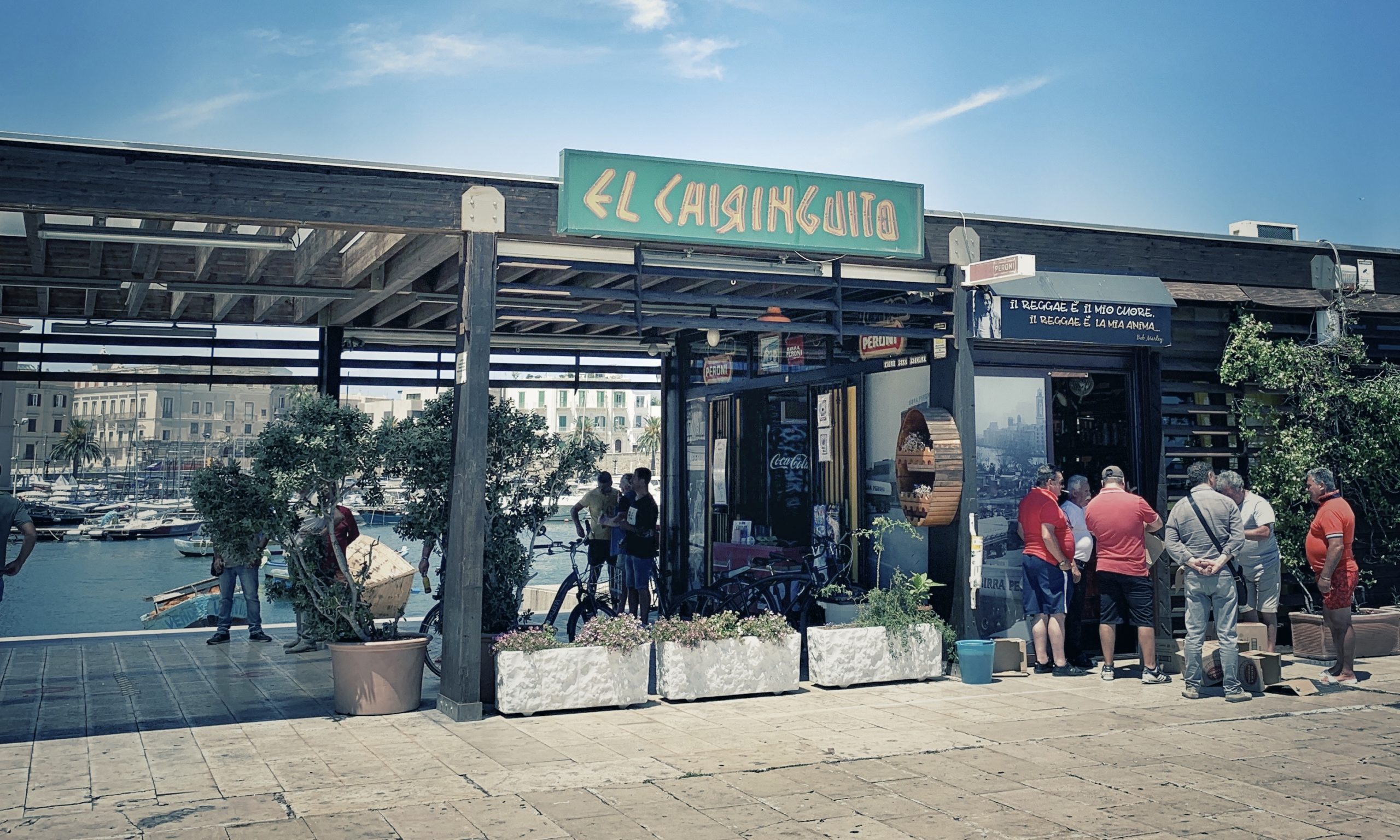
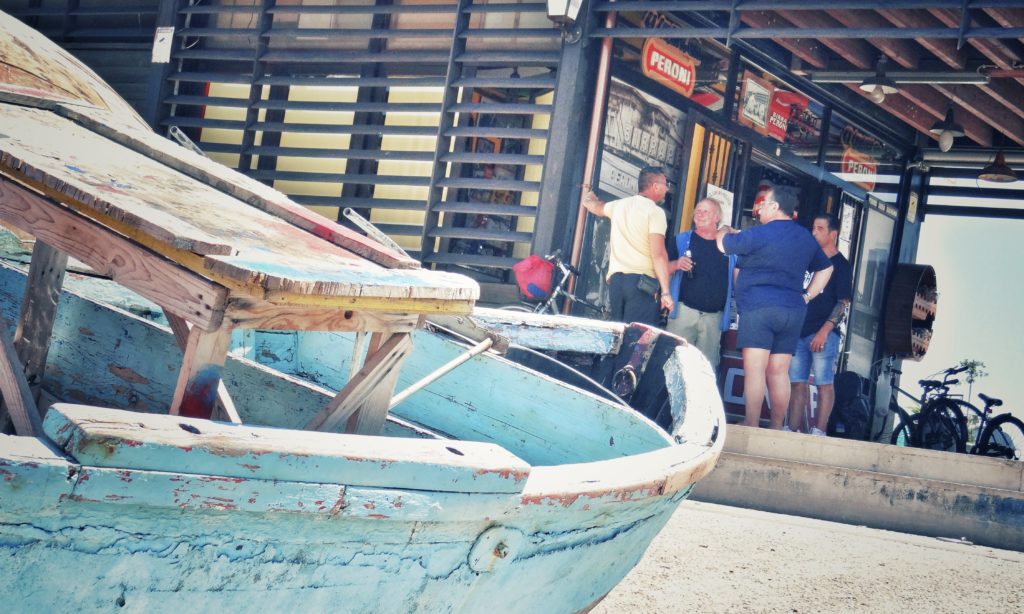
Where to eat
Throughout history Bari’s old port, sitting on the Molo San Nicola, has been an important fishery. It’s not without its dark past. In Medieval times it was an important trading post for “white gold”. Slaves. Mainly Slavic, sold for service in North Africa.
These days the seafood market trades the daily catch; local fishermen sell raw seafood, Bari’s speciality.
As with the rest of our region good food is easy to find. Don’t obsess about finding the Instagram perfect meal. Follow your nose ... and the locals.
Barivecchia | packed full of gems where eating is a pleasure. Here’s our full list of the best restaurants in Bari to eat the traditional dishes of Bari, from from frutti di mare crudo to tiella di patate, riso e cozze.
Street food | street food is becoming ever popular | the panzerotti* are exceptional | try some focaccia, salumi, cheese, sgagliozze, and home made gelato | for focaccia barese we especially recommend Panificio Fiore and Panificio Santa Rita in the old town € | check out our guide how to eat like a local in Bari with the Puglia Guys guide to Bari’s best restaurants and street food.
Mastrociccio | fast food Bari style! This is an excellent, authentic spot for more, great street food. Particularly well known for ‘U Pulp’ (polpo panino – Octopus in a bun). Slow cooked in a terracotta pignata, with fresh tomato, garlic, bay leaf and parsley and served with burrata, sun dried dried tomato, for depth of flavour and a touch of sweetness, salted corn crumble, rocket and finished with a drizzle of extra virgin olive oil and a sprinkle of black pepper. Magnifico! € | Mastrociccio website | Corso Vittorio Emanuele II, 17.
Porto Vecchio | Molo San Nicola | enjoy a freshly caught raw seafood lunch served up by the fisherman returning to port | we recommend freshly opened ricci (sea urchin) served with a hunk of bread and a wedge of lemon with a cold beer | mix from the catch of the day; sliced octopus, calamari, urchins, prawns and the pinkest shrimp, plump oysters and juicy mussels | €
El Chiringuito | Porto Vecchio, Molo S. Nicola | an absolute must for a panzerotto and Peroni | a no-frills hang-out from sunrise to sunset and beyond where young Baresi congregate to the sounds of reggae and lapping waves | €
Spaghetti all’assassina | Originating from Bari, the dish should be three things. Burnt, crispy and fiery | the technique is unusual, the taste unique!| the dish originated at the end of the 1960s at Al Sorso Preferito, in Bari's city centre | they still serve it | for a modern take try Urban Bistrot visited by Stanley Tucci on his ‘Searching for Italy’ TV series | €€ | the story of Bari’s must-eat dish, spaghetti all’assassina and the Puglia Guys assassin’s trail for the best all’assassina in Bari.
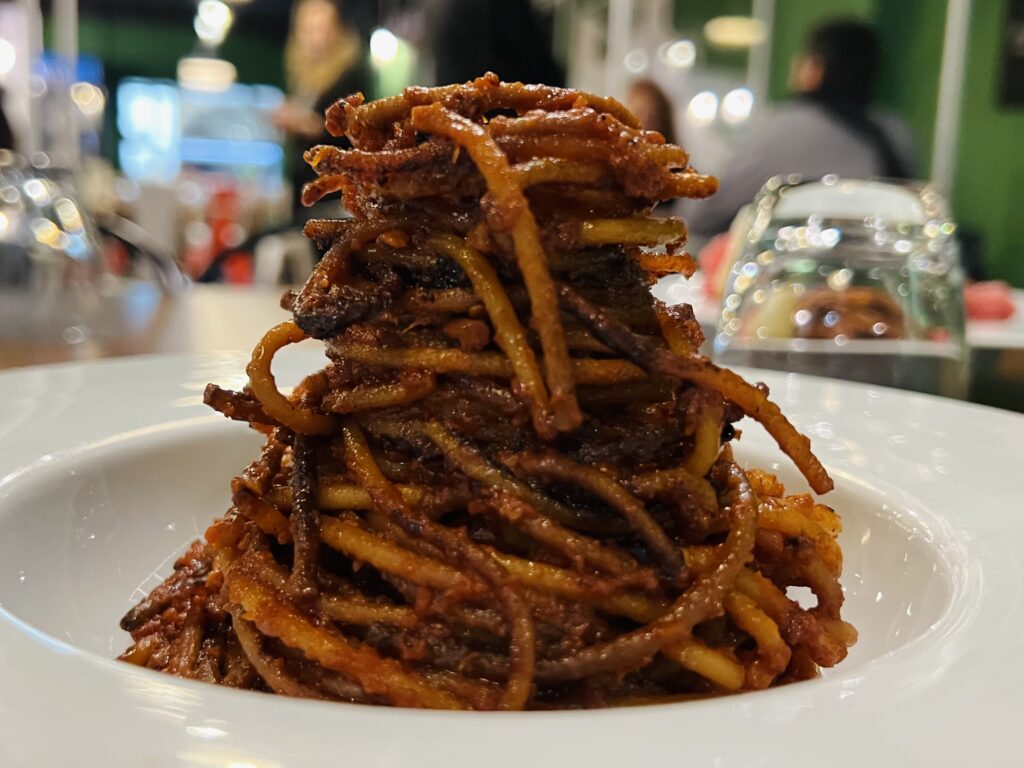
Tiramisù | for a twist on the classic recipe try La Ciclatera Sotto il Mare | read our full review | 🌈
El Pedro | Budget Bari! El Pedro is one of Bari’s best open secrets. Loved by its patrons - from construction workers to nearby office workers, this canteen style restaurant serves up AMAZING local dishes at ridiculous prices (€4/€5 for a generous portion). Keep in mind we don’t eat bad food, so do not let these prices put you off. Must try dishes at El Pedro include orecchiette con cime di rapa and fave e cicoria. Bari residents know all about it, visitors hardly ever. For your value added bonus, you see a slice of real life. It’s somewhat hidden away, but it is here, so pass through that magic door and enjoy.
* Panzerotti are Bari’s other specialty; fried dough filled with tomato and mozzarella.
Check out this Best of Bari Eating Out Guide for full details on the traditional dishes of Bari, and where to go to eat them.
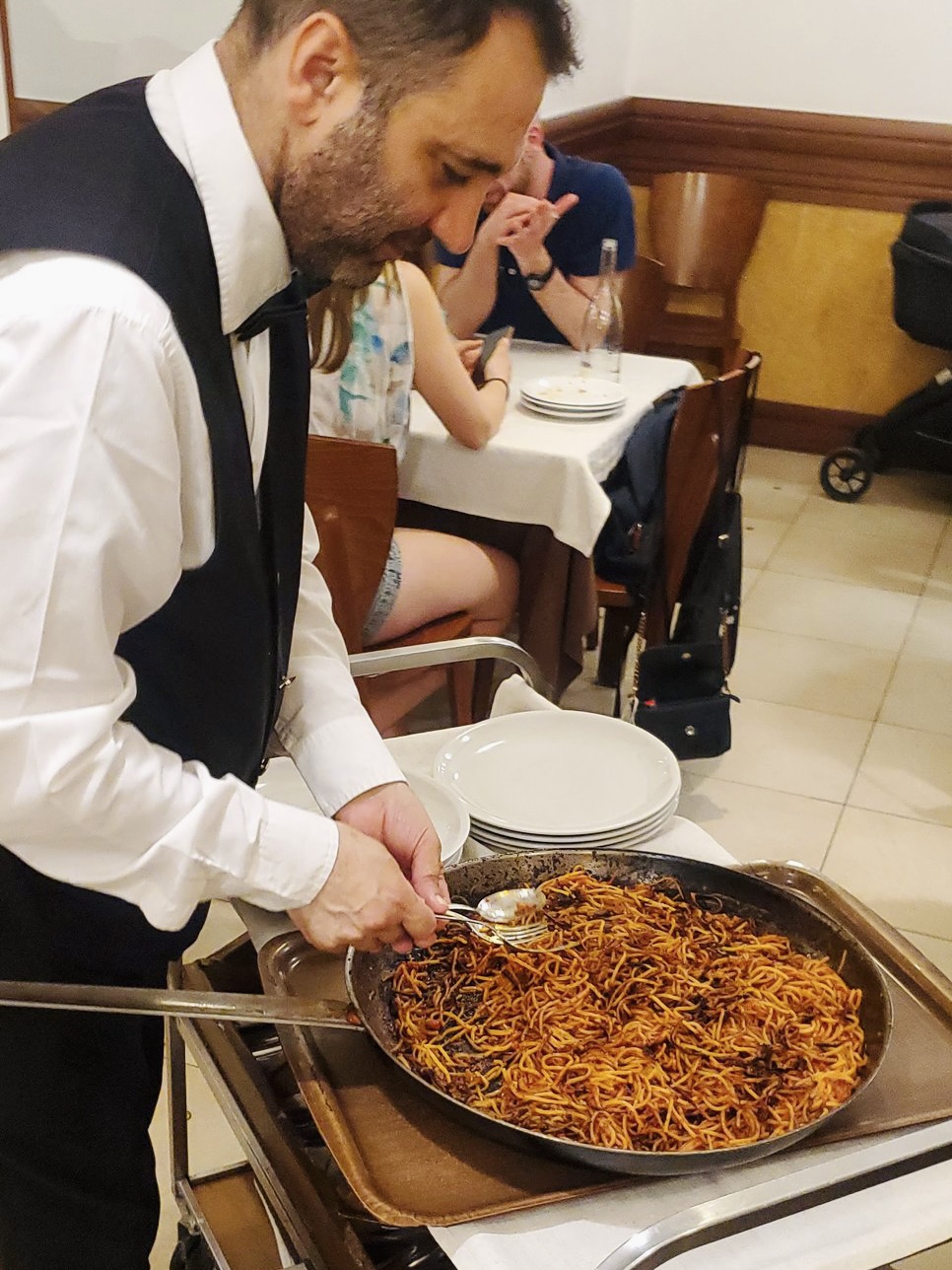
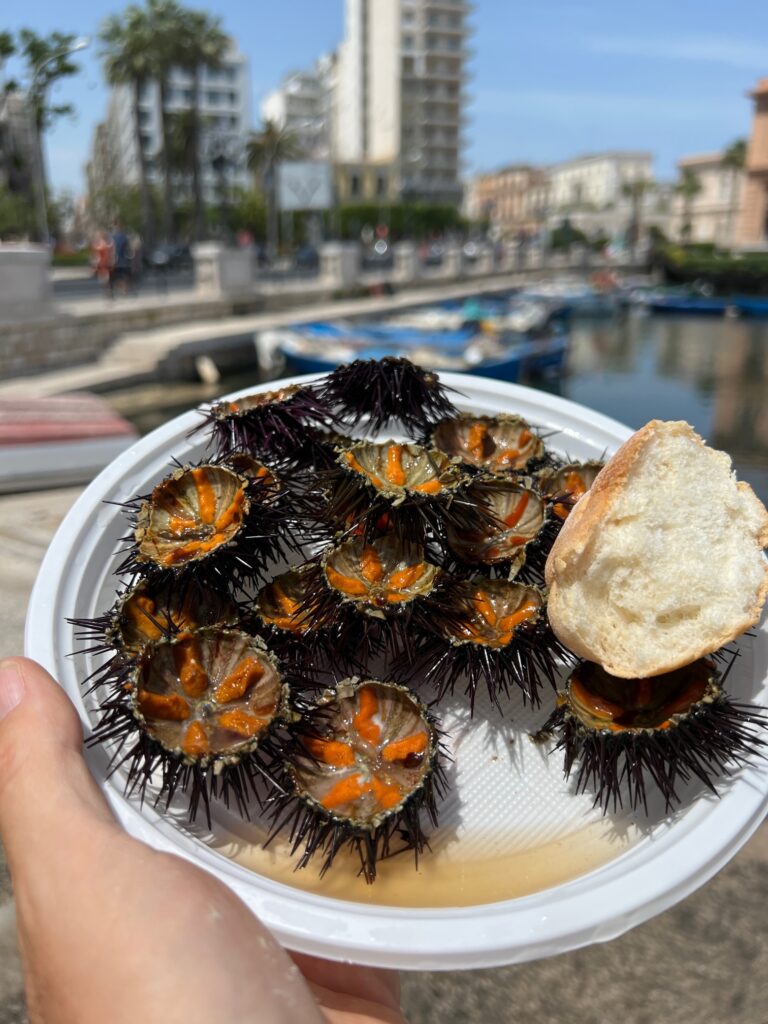
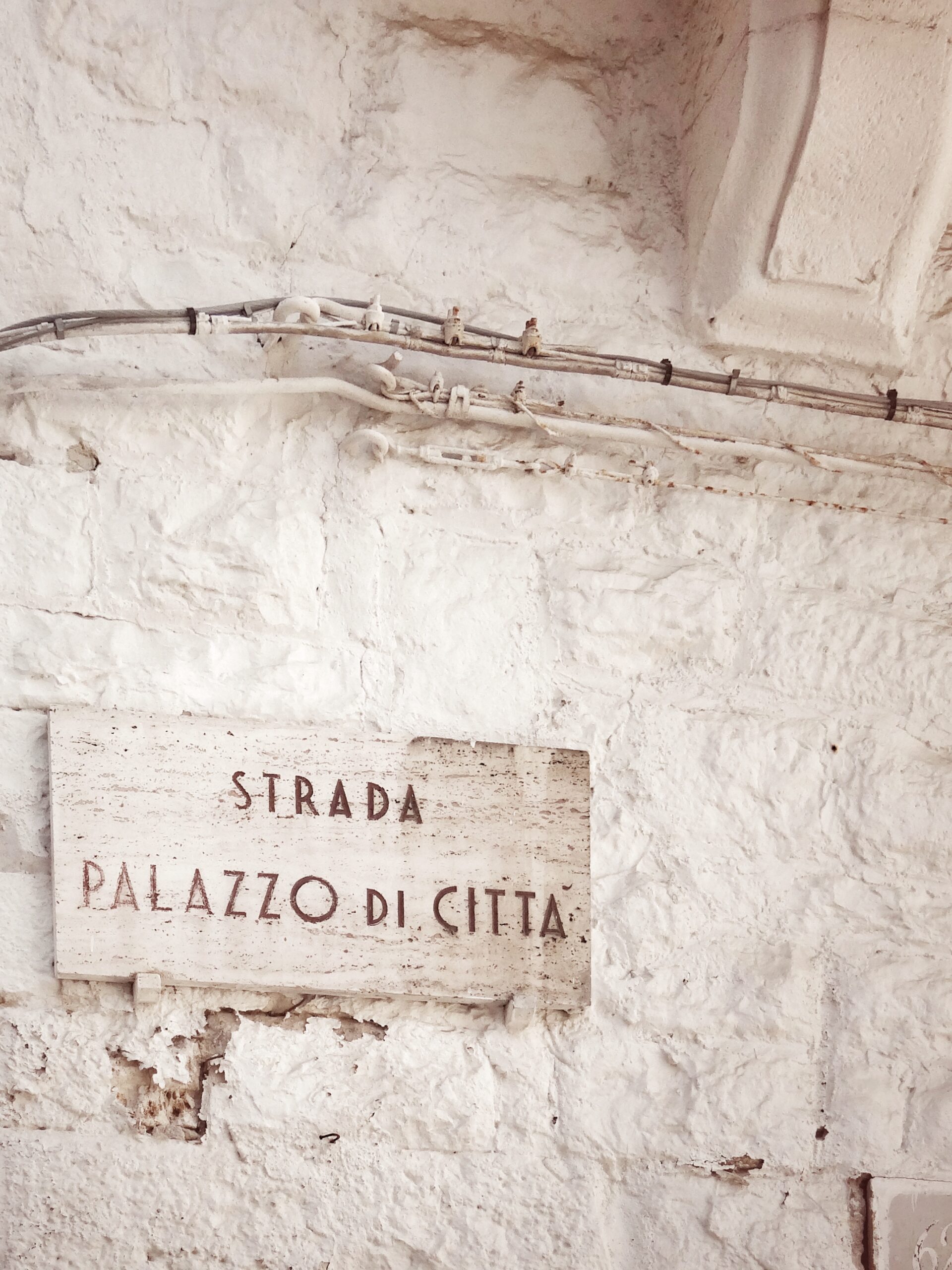
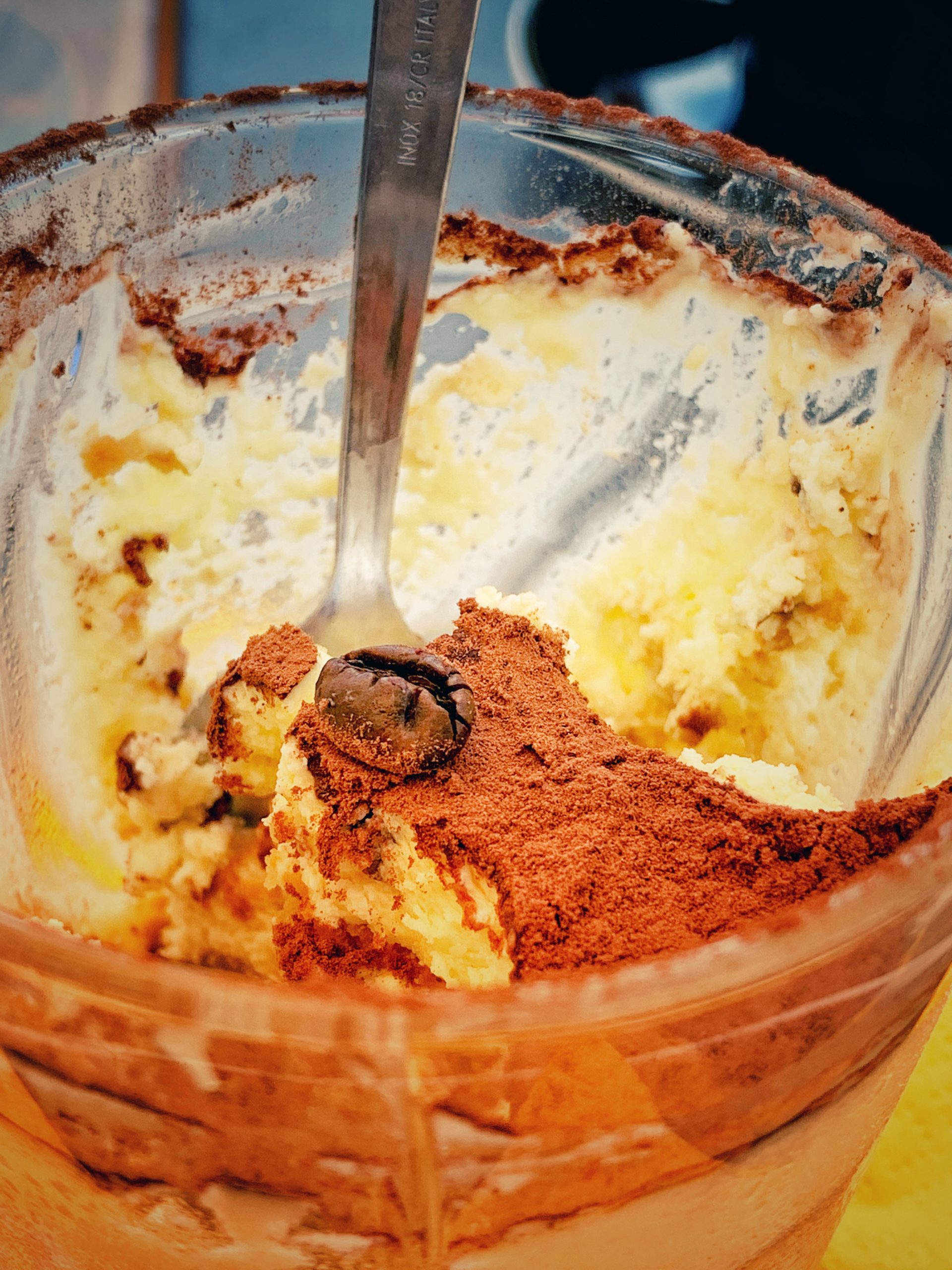
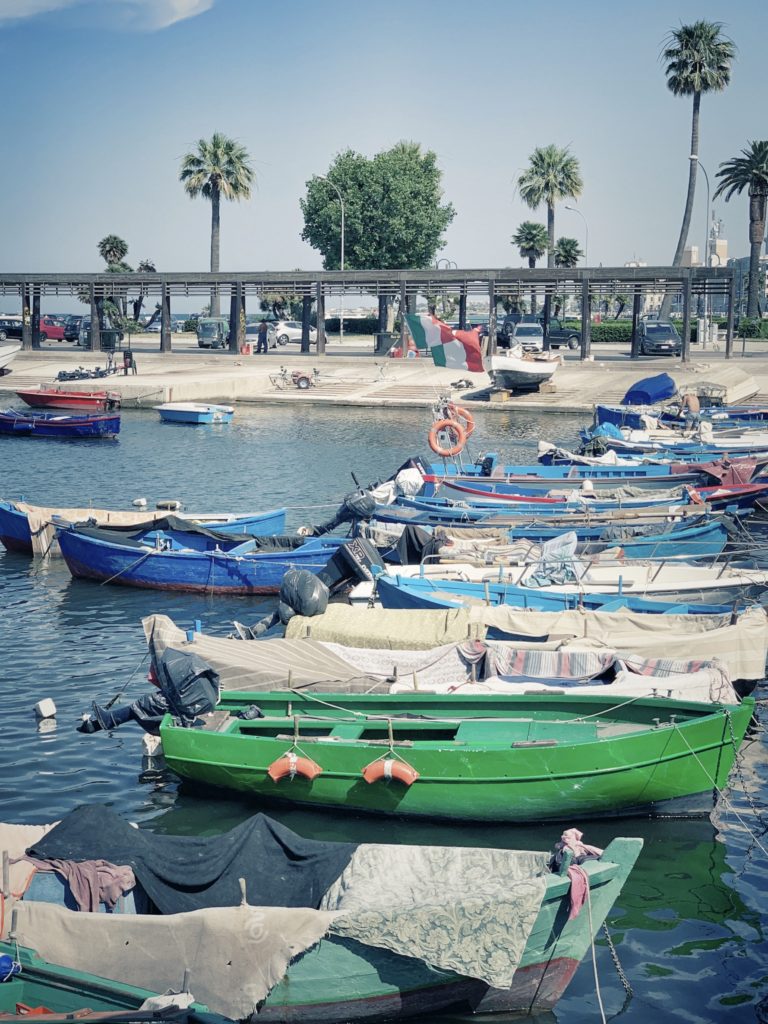
What To do
Free Walking Tour Bari |the Puglia Guys recommend taking part in the Free Walking Tour Bari around the old town (called “The First”). The tour is led by a qualified, local guide. At a little under 3km it takes just over 2 hours, and is in English (there is a separate Italian tour as well, as also a separate “The Jungle” tour). At the end of the tour you are invited to pay what you want..
Contemporary art and design | visit Spazio Murat and their Puglia Design Store | located on the Piazza del Ferrarese at the edge of Bari Vecchia it bridges the old and the modern | info@spaziomurat.it | +39 080.2055856.
Pinacoteca Corrado Giaquinto | Via Spalato 19 - Lungomare Nazario Sauro 27, 70121 Bari | +39 080 541 2422 | a hidden gem of an art gallery with a small but interesting collection | pinacotecabari.it
Promenade along the lungomare | Bari has an exceptionally long seafront | walk from the old port on Molo San Nicola to the ever popular Pane e Pomodoro urban beach.
Stroll along Bari’s Strada delle Orecchiette | watch the grandmothers make and sell fresh pasta outside their front doors | via dell'Arco Basso, Bari Vecchia.
Visit the Madonella quarter | diverse and popular with students | soak up the ambience in the quiet local-only bars - Prinz Zaum a bar come bookshop with readings and live music is our favourite.
Explore #1 | make efficient use of your time in Bari as a base to explore nearby towns with outstanding cultural and historical heritage which are very easy to reach by train | Barletta | Trani | Bitonto | Andria | or the lesser known but no less lovely towns such as Ruvo di Puglia and Giovinazzo.
Explore #2| Matera is a wonderful city to visit, easily accessible by road (and usually by train) and only 64km from Bari | Altamura famed for its bread is en route | Castel del Monte “a unique masterpiece of medieval military architecture” is a UNESCO World Heritage Site, is an easily managed detour.
Gay Bari | read our Gay Bari Guide.
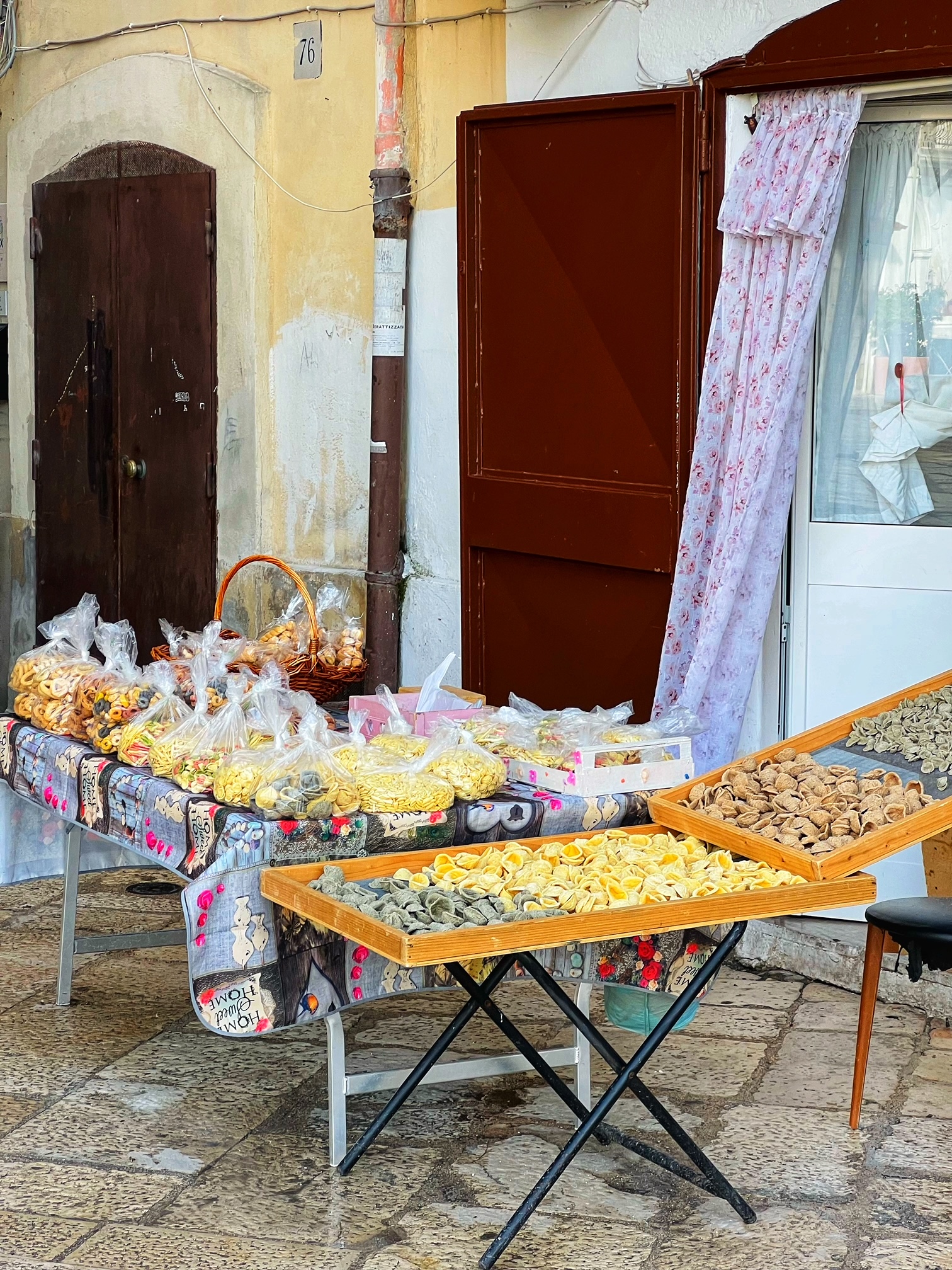
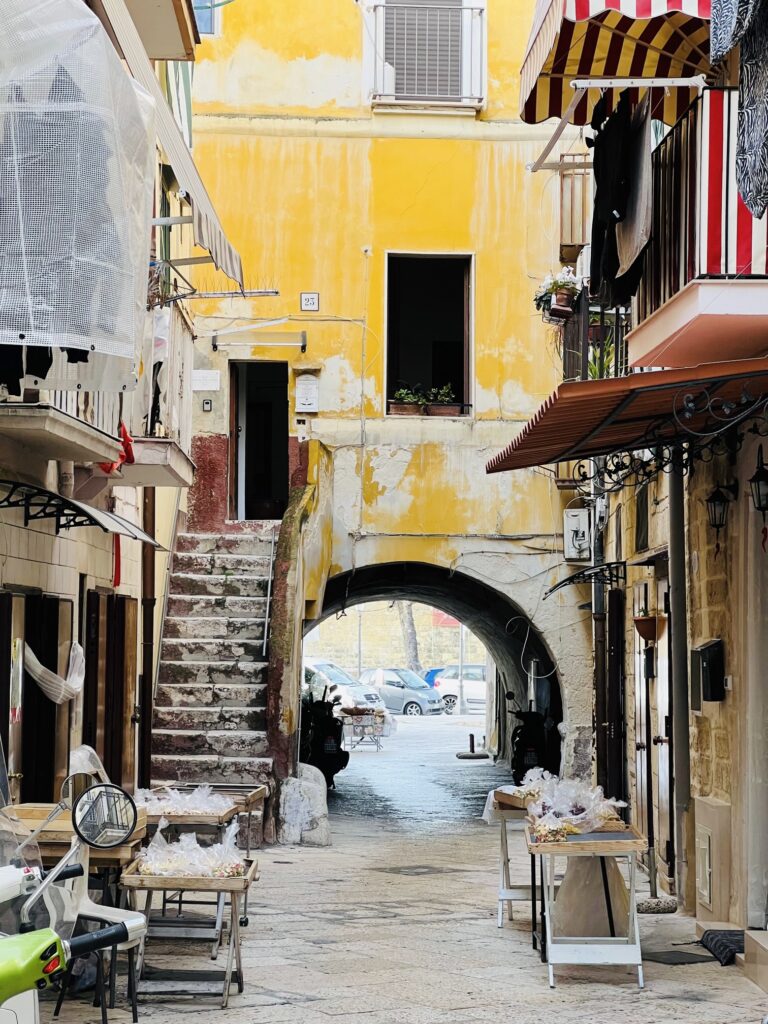
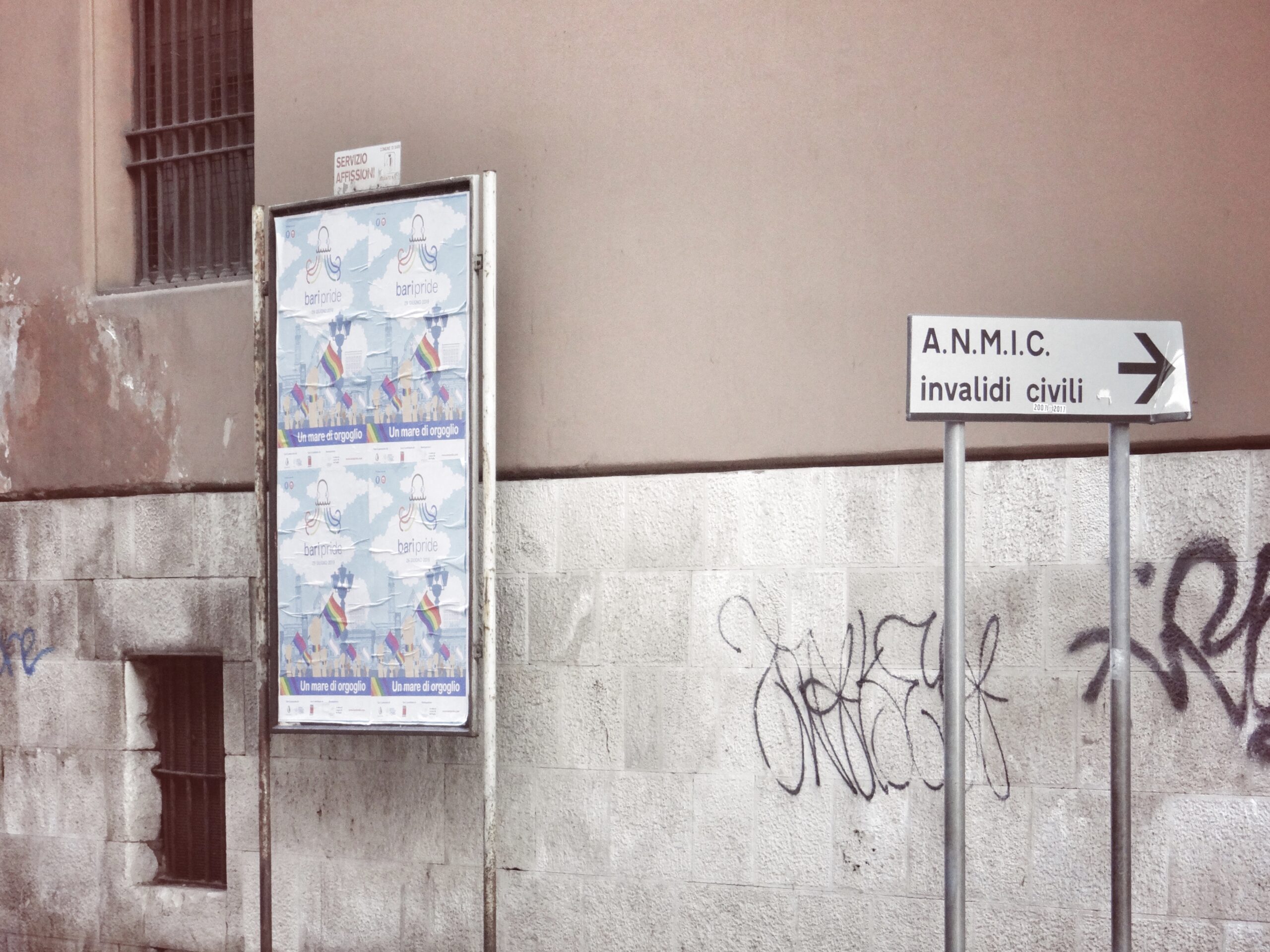
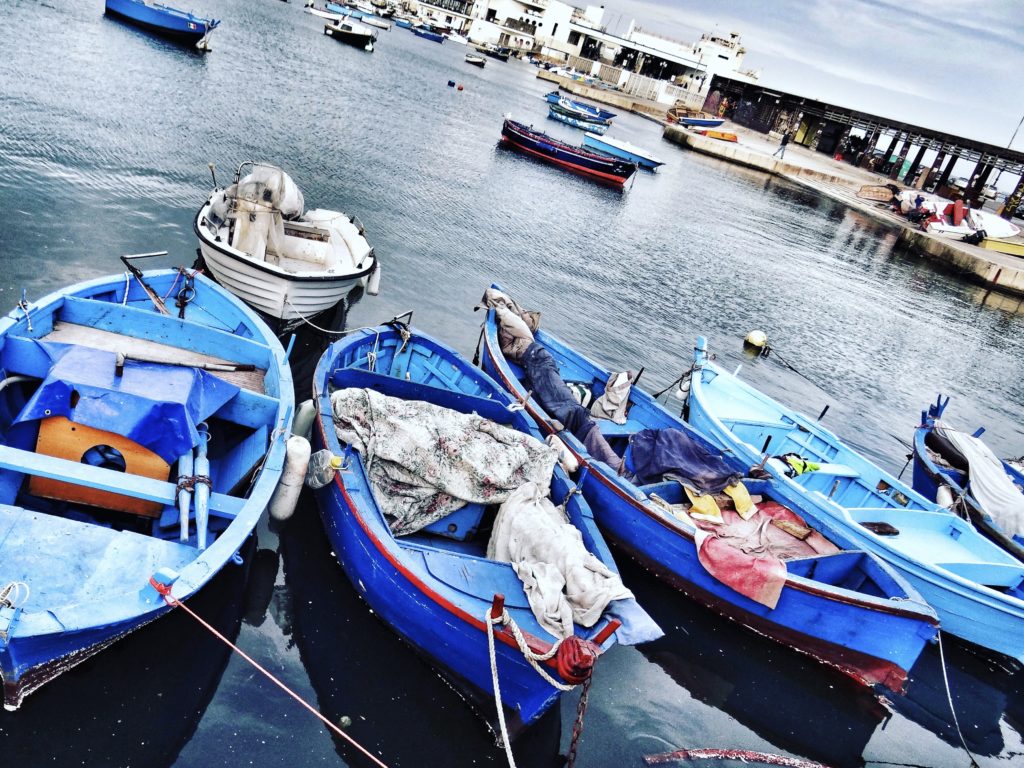
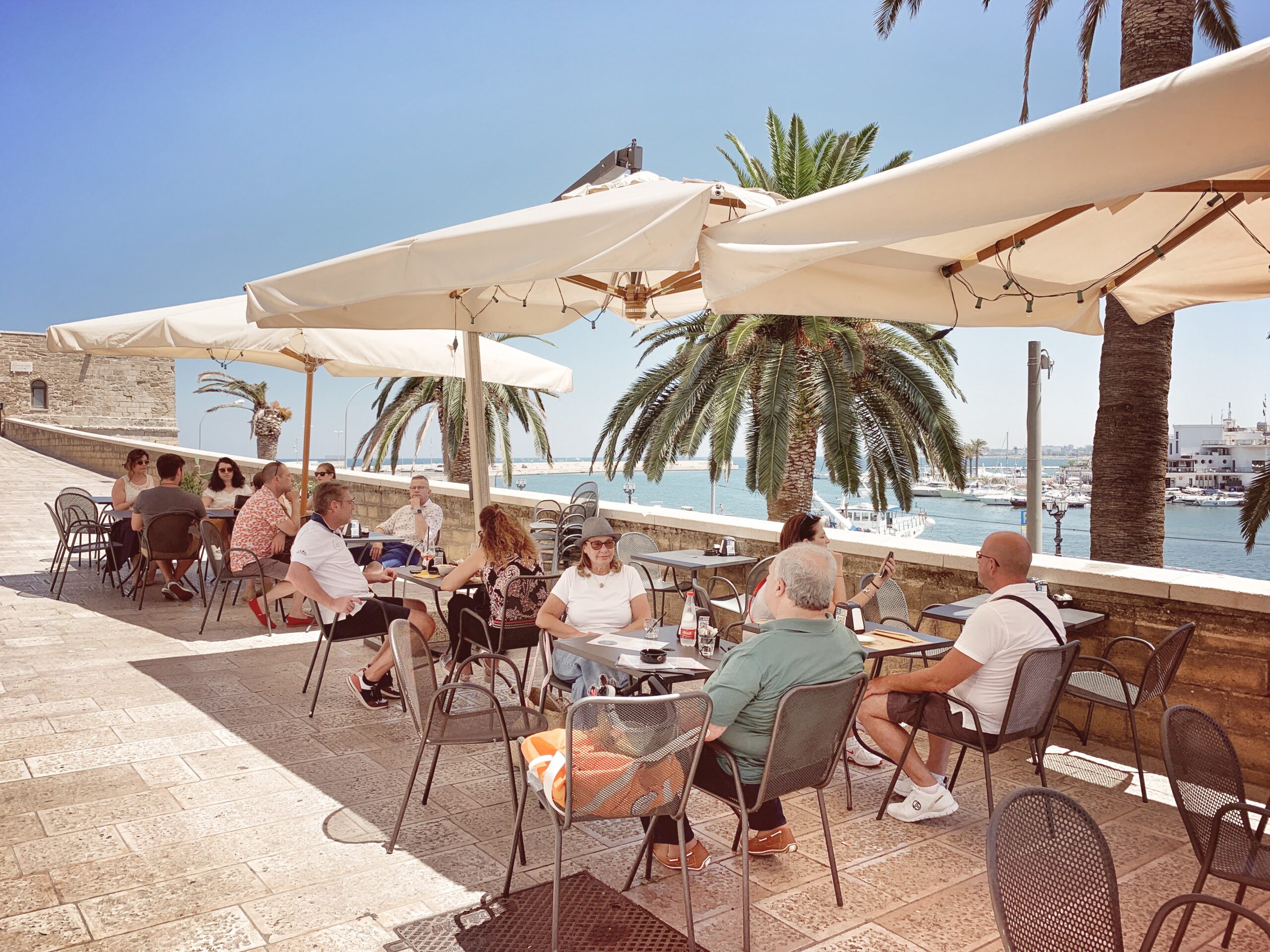
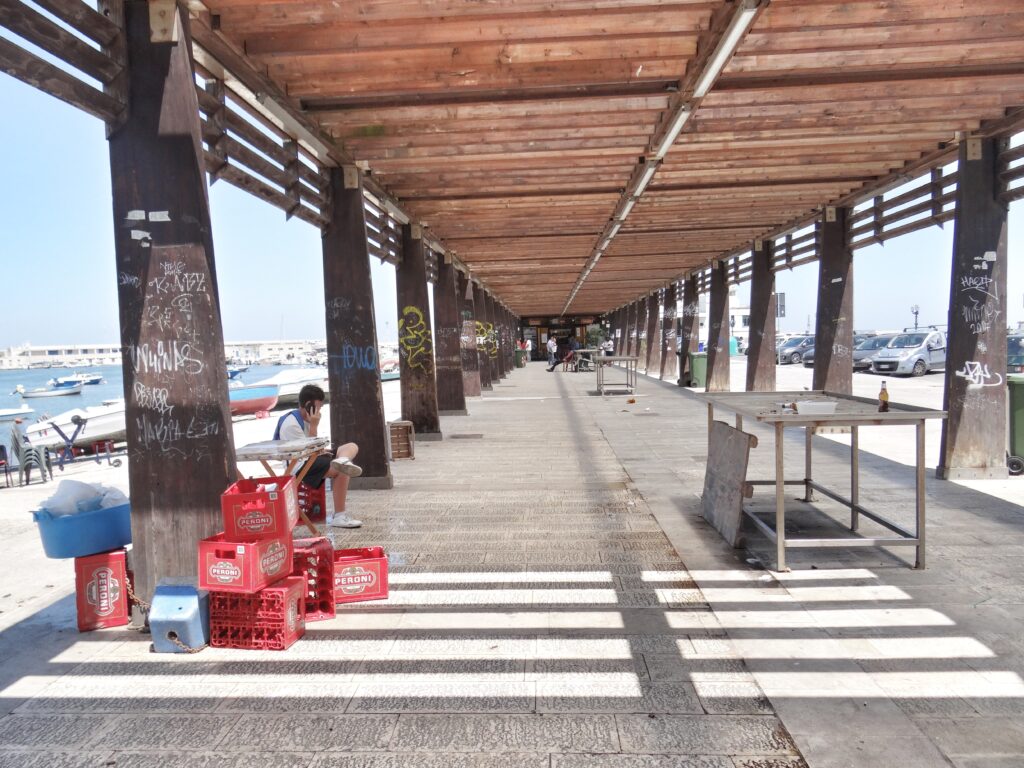
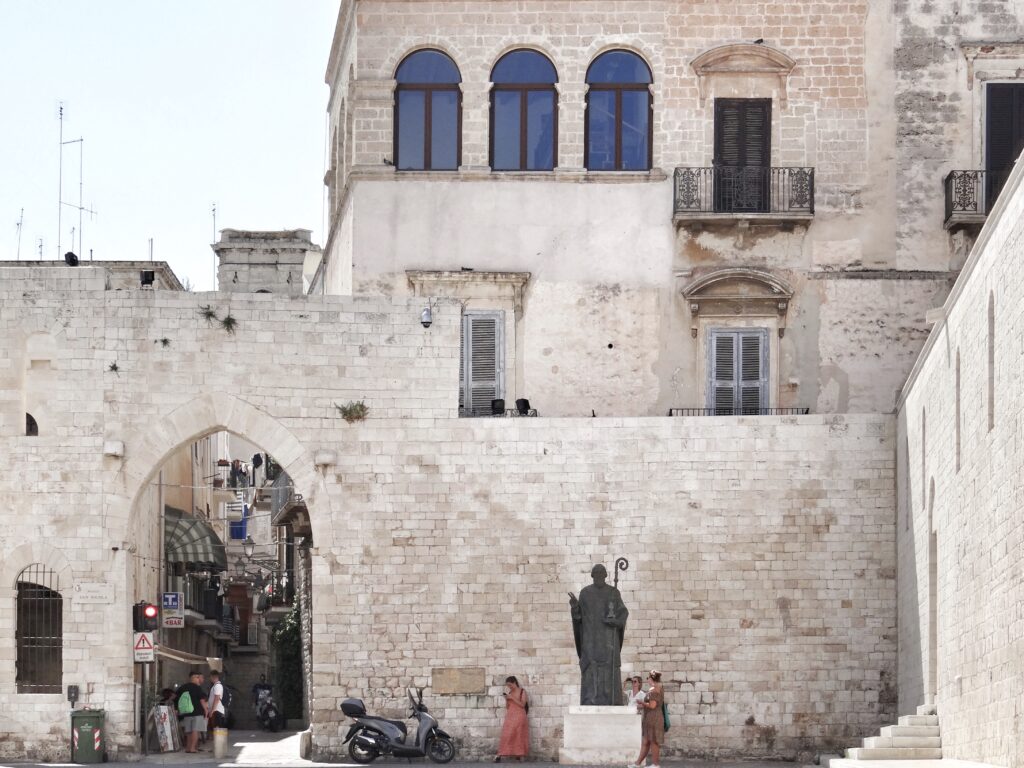
La festa di San Nicola
The arrival of the relics of Saint Nicholas on 9 May 1087 is marked each year by a city-wide festival split over 3 days, Bari’s most important event.
On the first day of the patronal festival his painting is taken to sea. San Nicola is also the patron saint of seafarers. A grand parade takes place that night; historically themed with a procession of floats and about 500 people dressed in 11th century costume.
A sea procession is the main focus of the next day. San Nicola’s statue is taken far out to sea. A flotilla including local fishermen accompany his return at the end of the day. His statue is carried in a torchlit procession back to the basilica. That evening hosts the main fireworks competition.
The last day finishes with a final mass and a choir sing while the relics are blessed. The festival finishes with an airforce display and fireworks.
During the festival luminarie light up the streets and piazze, there is street food and cultural events take place across the city.
By Air
Connections to Bari | the train station connecting to Bari centrale is easily accessed opposite the south exit from the terminal building | trains run frequently | bus connections are at the side of the train station entrance | see our getting here and getting around FAQ for full details.
Travelling to an onward destination | check flight availability and prices for Brindisi’s Salento airport | your destination might be closer to and easier to get to from there (even the fastest route to Alberobello from Bari airport takes longer than getting there from Salento airport) | read our Bari or Brindisi airport? guide for more information.
By train
Bari Centrale is the main railway station. It has an easy connection direct from Bari airport. See the BIG getting here and getting around FAQ for details on the rail and bus connections from Bari onward.
At the front of the station is the Piazza Aldo Moro, a clean and pleasant space dominated by the fountain and surrounded by parking areas. The square is usually buzzing with students. The main university building is one block away on the opposite side.
Piazza Aldo Moro in turn leads onto via Sparano da Bari which continues through the Piazza Umberto I and onto Bari’s main shopping precinct. Most of it is pedestrianised. Continuing all the way to its end, across the Corso Vittorio Emanuele is Bari Vecchia- the old town.
It’s about a 15 minute walk from the station to the old town.
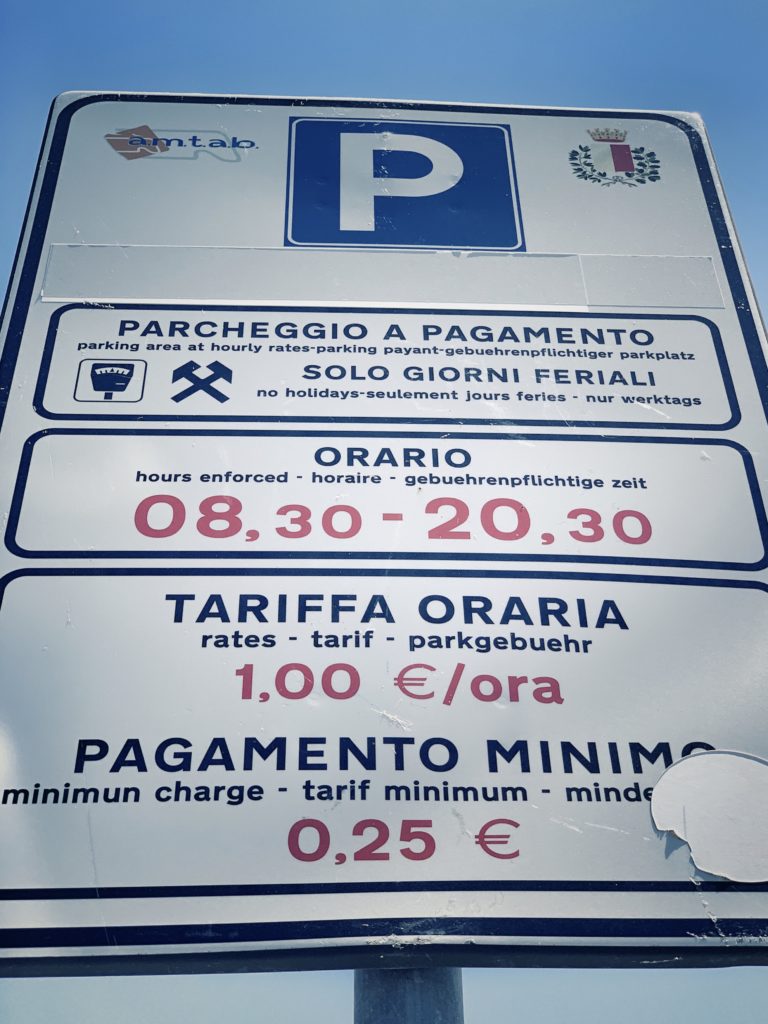
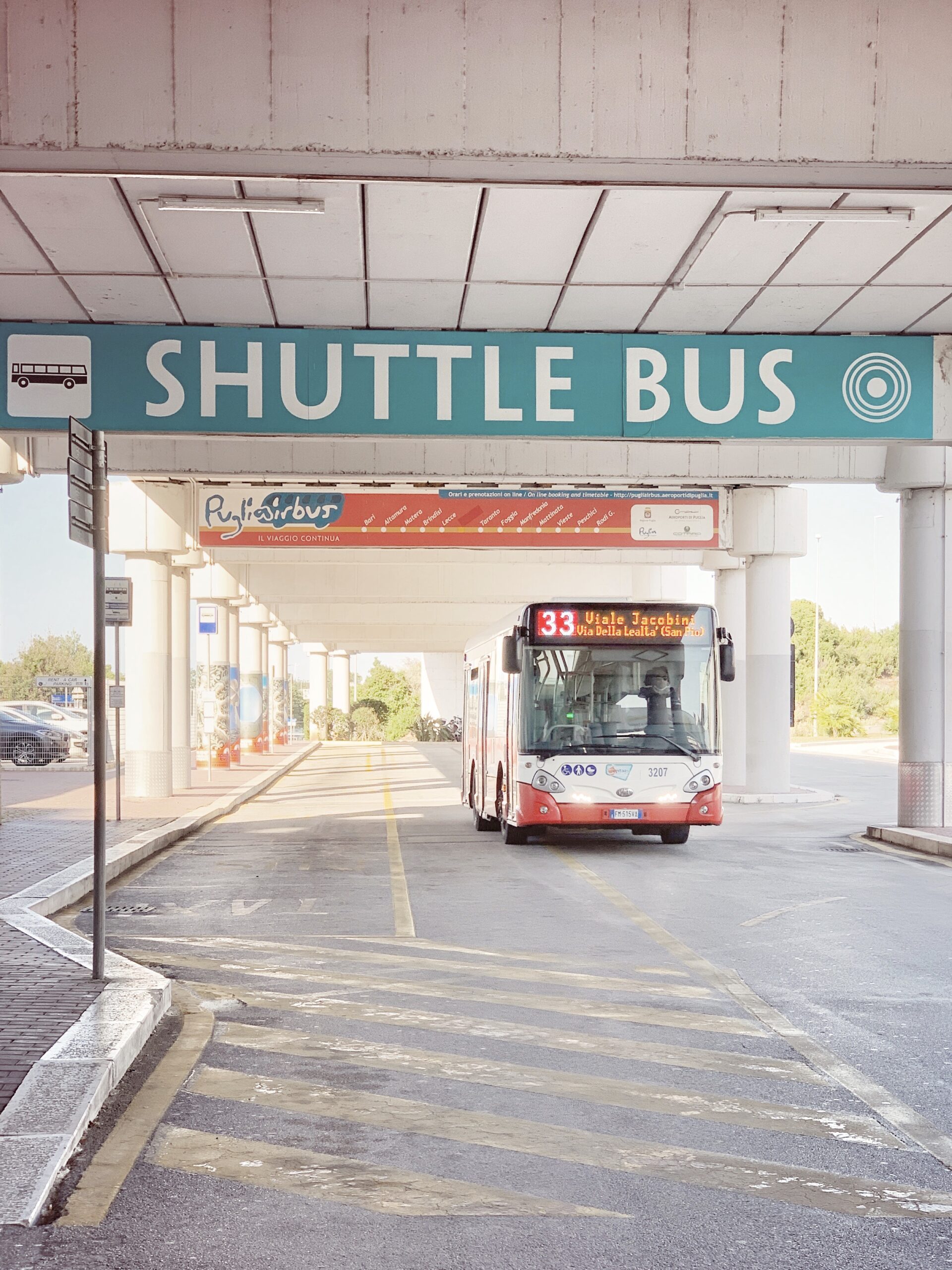
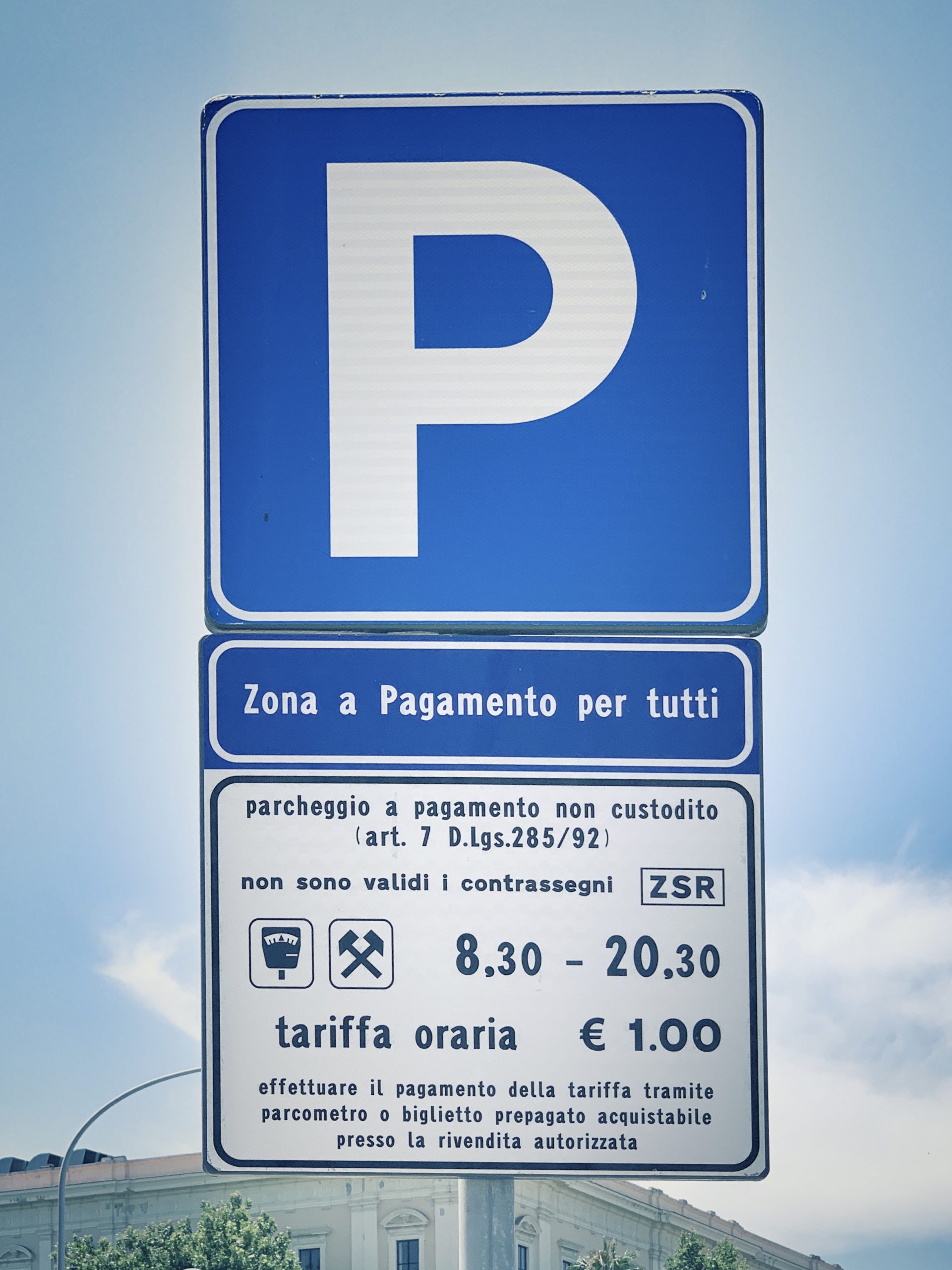
By car
If you are hiring a car from the airport, or otherwise driving into Bari, you will come via the Bari tangenziale - the main ringroad around the city.
Coming from the south into Bari (rather than continuing to the airport for which you stay on the Bari tangenziale) we exit the SS16 as you approach Bari taking the lungomare exit. This leads you directly along Bari’s extensive seafront all the way to Bari Vecchia, and to our preferred parking spot (read on).
The tangenziale is easily managed. Just be aware that it gets busy at peak times, especially between 8.30am - 9.30am, around the Ferragosto summer bank holiday (15 August - Italy’s busiest holiday period) and, coming back into Bari from Polignano a Mare onward, on Sunday late afternoon when the beach traffic heads back home; at the end of June we noticed the traffic was stacked back in both lanes from Polignano to Bari. Fortunately we were heading in the opposite direction ...
If you are travelling at these times allow yourself more than the usual 25-minutes that it takes to get around the ring road to and from the airport. Allow up to 50-minutes to be sure.
Currently there is a temporary road realignment between junctions 13 and 14 in both directions. As a result there are a couple of tight curves that are taken too fast by most of the traffic, causing cars to suddenly cut across one or even too lanes. Be prepared
See the BIG guide to driving in Italy for more information on the SS16 Bari tangenziale.
Parking
Depending on the time of day you can get lucky. Our preference is to park on the Lungomare Araldo di Crollalanza by the Molo San Nicola, at the Porto Vecchio - right by the legendary El Chiringuito.
If it is full, continue around the old town, following Giardino Vito Carofiglio, Lungomare Imperatore Augusto and Corso Antonio de Tullio.
The blue lines/boxes indicate pay as you go parking.
Dei | a film by Cosimo Terlizzi
A story about Martino’s self discovery. Every day Martino travels in secret from the Apulian countryside to Bari where he pretends to be a student at Bari university to learn about art and the classics. But it is a journey into a parallel world of discovery and experience.
A beautiful film, with a sub plot that tells enough about olive trees to understand their importance to our region.
Gino’s Italian Escape | Bari
Italian celebrity chef Gino D’Acampo takes time out to chill at Bari’s Porto Vecchio and a joy a panzerotto at El Chiringuito.
If the video is disabled in your browser you can watch it on YouTube - jump to 19m25s for the Bari section.

